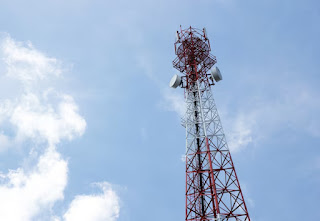
The Indian telecom market is buzzing with speculation about another tariff hike by giants Reliance Jio and Bharti Airtel by late 2025. With BSNL previously riding the wave of customer discontent to gain millions of subscribers, could the state-owned telecom titan repeat its success? Let’s dive into the latest trends, opportunities, and challenges to see if BSNL can once again turn private telco price hikes into its golden opportunity.
The Tariff Hike Buzz: What’s Cooking in 2025?
After the July 2024 tariff hikes saw Jio and Airtel increase prices by 10-27%, subscribers flocked to BSNL’s budget-friendly plans. Jio lost 11 million users, Airtel shed numbers too, and BSNL welcomed nearly 7 million new customers between July and October 2024. Fast forward to March 2025, and whispers of a fresh 10-15% hike by year-end are growing louder. Analysts suggest this move aims to boost ARPU, offset 5G costs, and prep for Jio’s rumored 2025 public listing. But will history repeat itself for BSNL?
Telecom Titans Today: Who’s Winning?
Jio and Airtel remain the undisputed leaders. By December 2024, Jio boasted 465.13 million subscribers, adding 3.9 million, while Airtel hit 385.3 million with a 1.03 million gain. Meanwhile, BSNL’s 91.72 million base took a hit, losing 0.32 million users after its own tariff tweak in late 2024. Vodafone Idea, with 207.25 million subscribers, continues to falter. As private players gear up for another price jump, BSNL’s low-cost appeal could shine again—but only if it plays its cards right.
BSNL’s Golden Opportunity: Can It Strike Back?
Here’s why BSNL might reclaim its moment in the spotlight:
- Unbeatable Pricing: BSNL’s plans, like Rs 897 for 180 days with unlimited calls and 90 GB data, dwarf Jio’s Rs 189 and Airtel’s Rs 199 base offerings. If it keeps prices steady during a hike, price-sensitive users could swarm back.
- TRAI’s Affordable Push: New guidelines mandate budget voice and SMS plans from Rs 10 and extend voucher validity to 365 days. BSNL’s Rs 439 plan for 90 days of unlimited calling fits this trend perfectly, targeting India’s 15 crore 2G and voice-only users.
- Churn Magnet: Past hikes triggered massive subscriber shifts. A 15% increase could spark another exodus to BSNL, especially in rural markets.
Roadblocks in BSNL’s Path
BSNL’s potential isn’t without hurdles:
- Network Woes: Subscriber losses in November 2024 highlight BSNL’s Achilles’ heel—poor service quality and a lagging 4G rollout. Without upgrades, new users may jump ship again.
- Fierce Competition: Jio and Airtel are countering with voice-only plans and 5G perks like JioHotstar in 4K trials. Their superior networks could blunt BSNL’s edge.
- Long-Term Limits: BSNL’s low tariffs lean on government support, but its loss-making status and slow infrastructure growth cap its scalability.
What’s the Winning Play for BSNL?
To turn a 2025 tariff hike into a subscriber goldmine, BSNL needs to:
- Stick to rock-bottom pricing—think sub-Rs 100 plans for 28 days versus Jio and Airtel’s projected Rs 200+ rates.
- Speed up its 4G rollout, as pledged by Union Minister Jyotiraditya Scindia, to keep users hooked.
- Target TRAI’s affordability push to lock in 2G and budget users.
In 2024, BSNL surged post-hike but faded by November due to service gaps. Jio and Airtel’s quick December recovery proves their staying power. BSNL’s window exists, but execution is everything.
The Verdict: BSNL’s Big Moment?
If Jio and Airtel hike tariffs in late 2025, BSNL can absolutely tap the opportunity—especially among cost-conscious customers. Its affordable plans and TRAI-aligned offerings give it a fighting chance. Yet, without fixing network reliability, any gains might be fleeting, just like last time. As the telecom battle heats up, BSNL’s next move could make or break its resurgence. Will it seize the day, or watch Jio and Airtel dominate again? Stay tuned!

Comments
Post a Comment